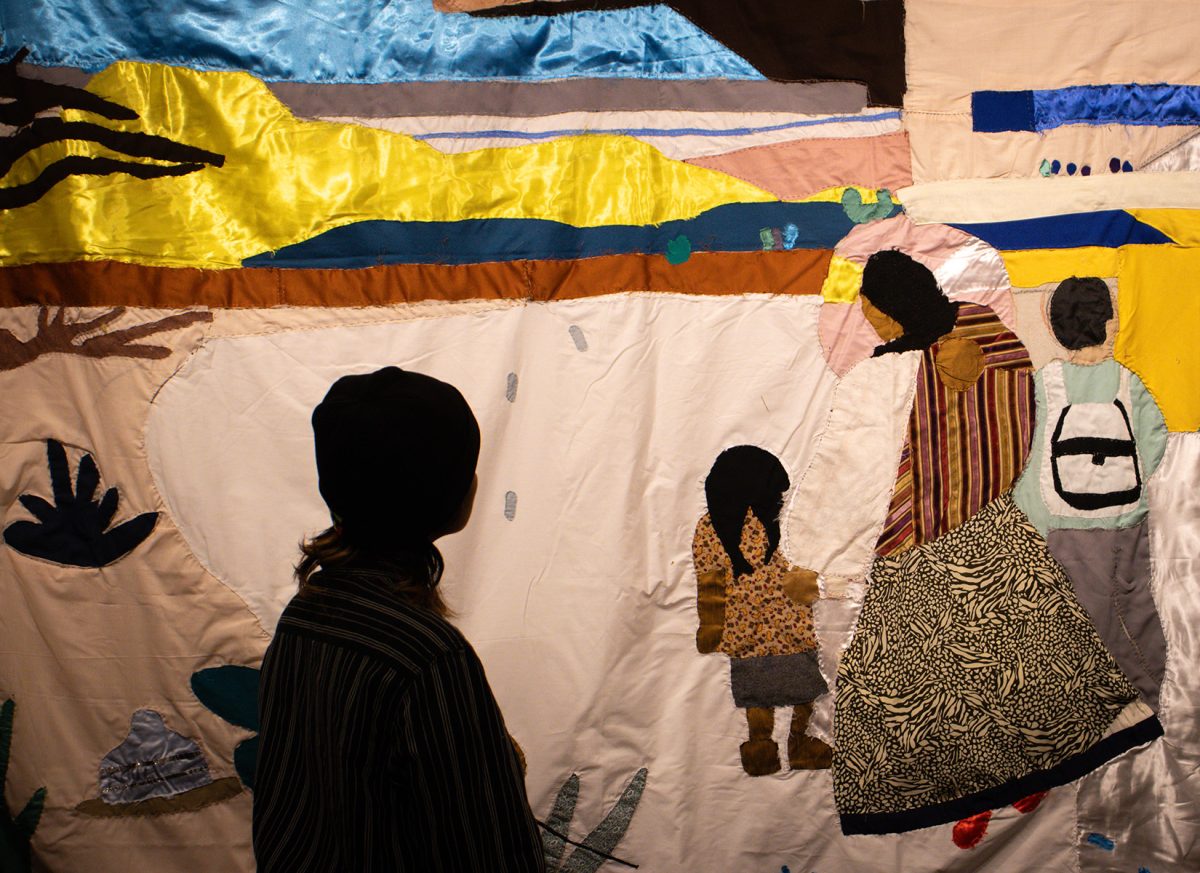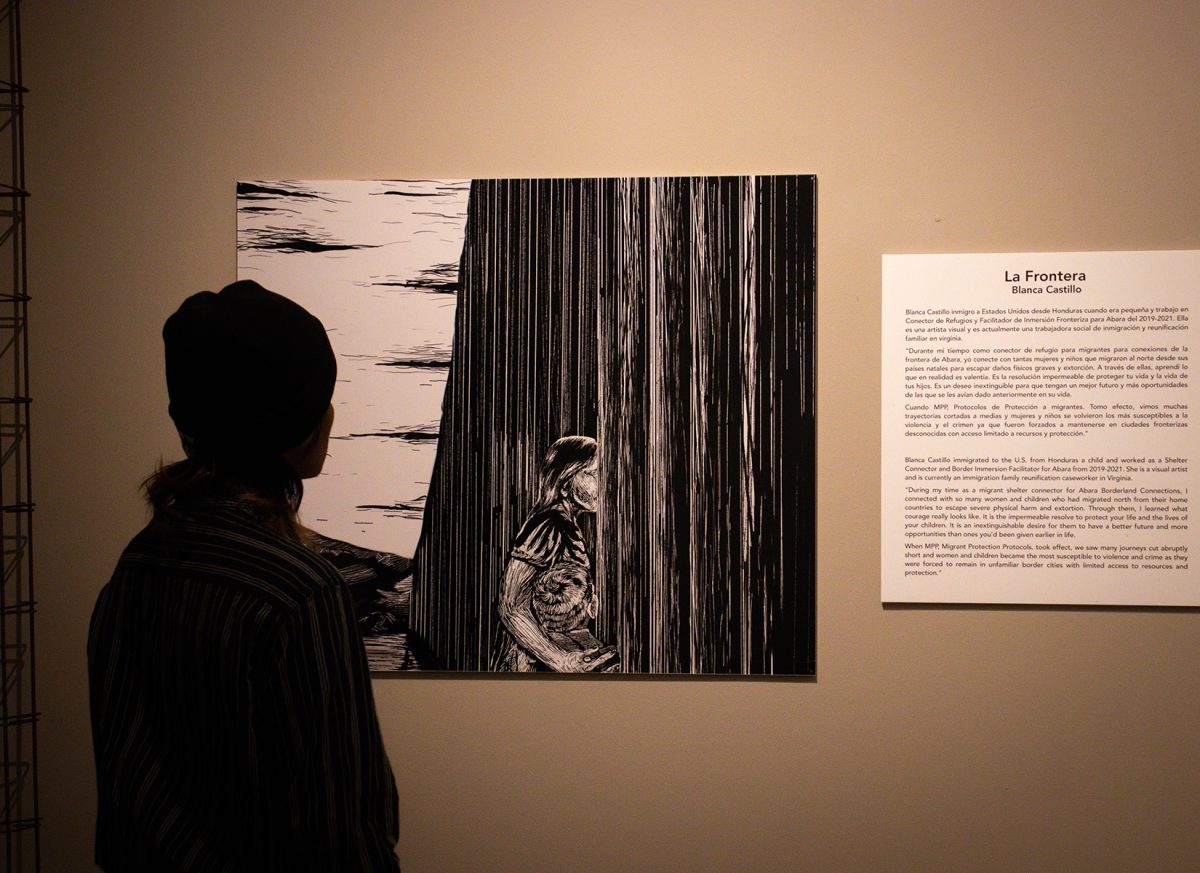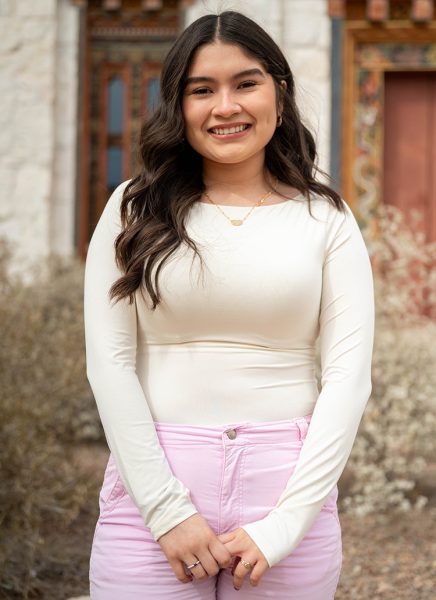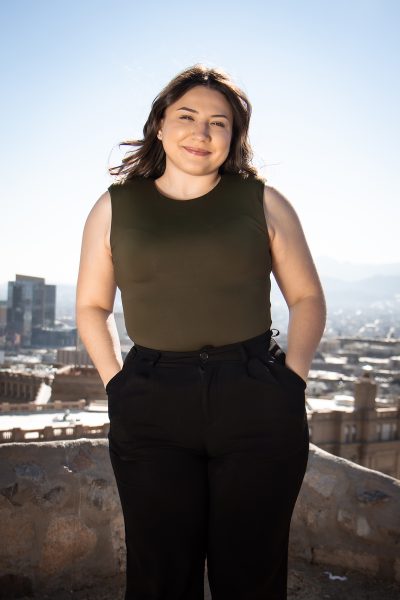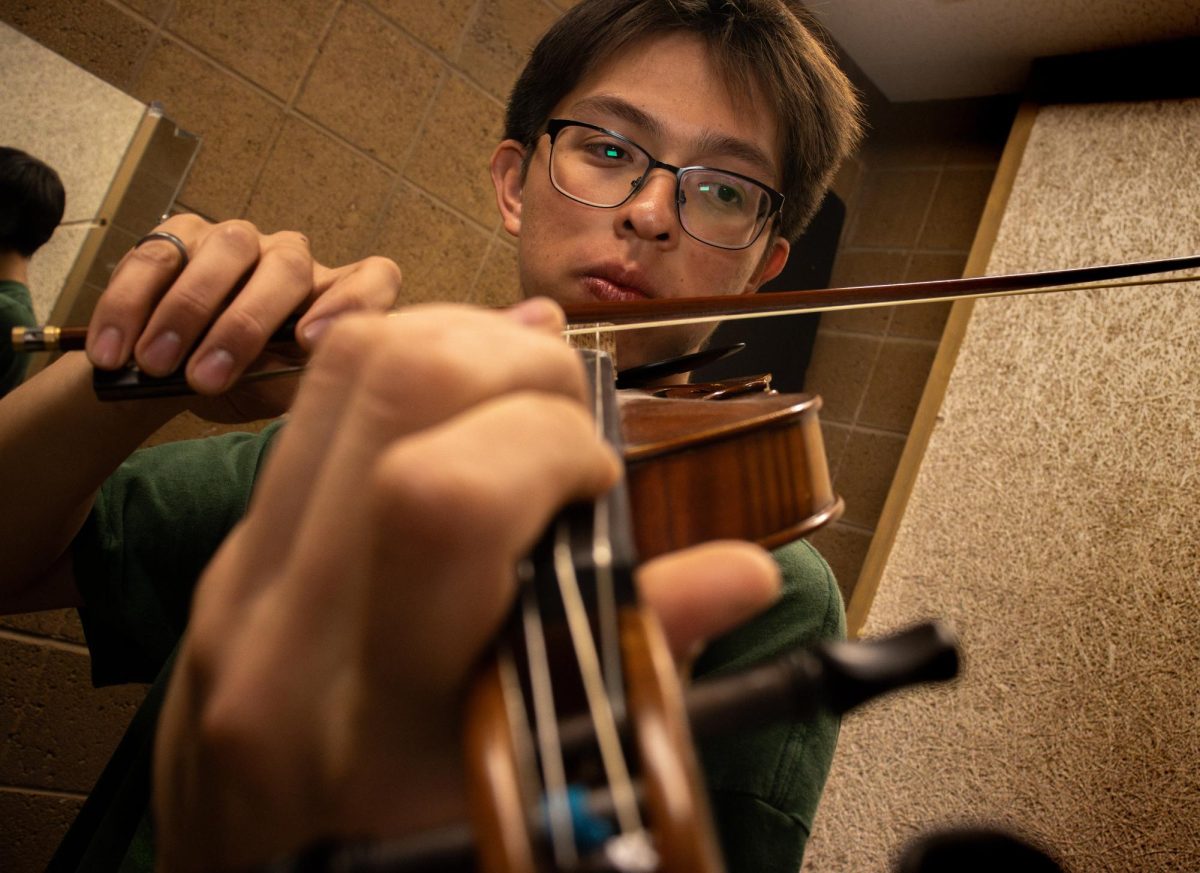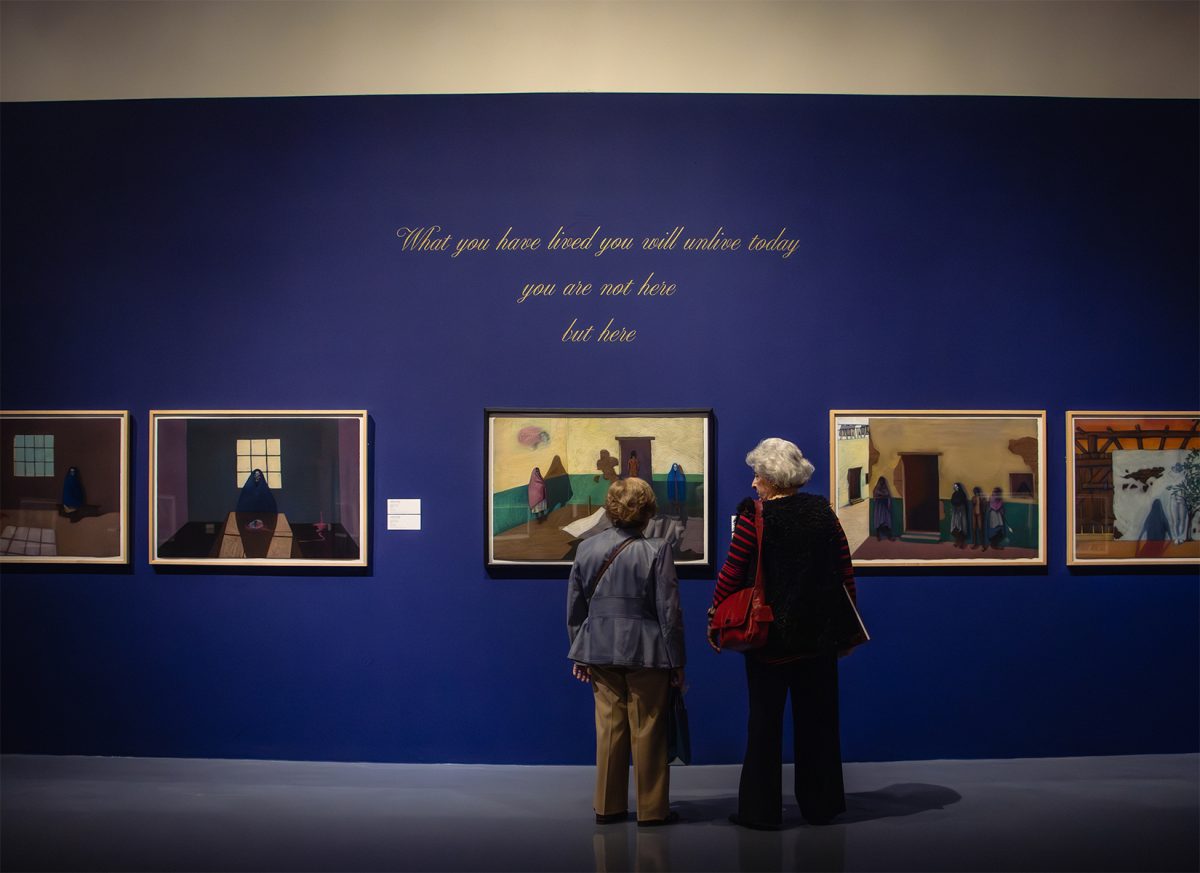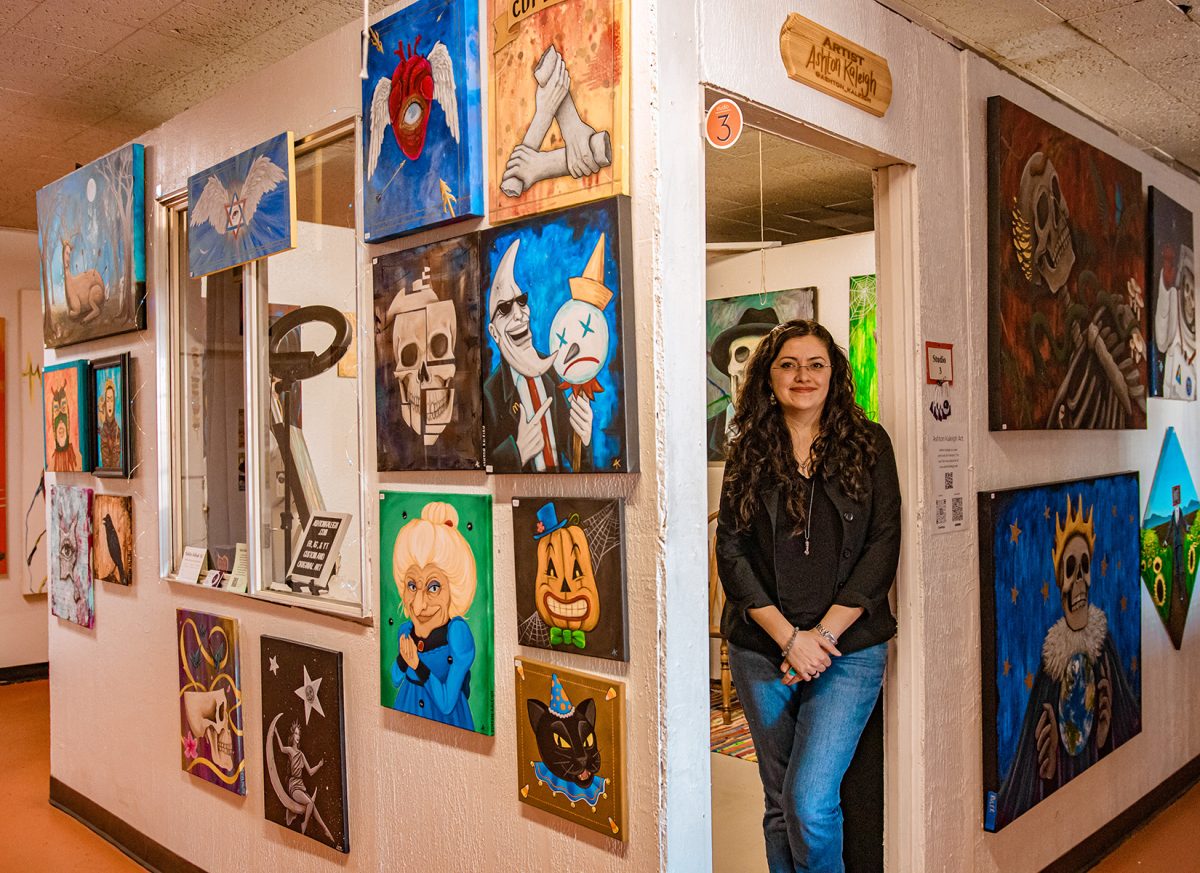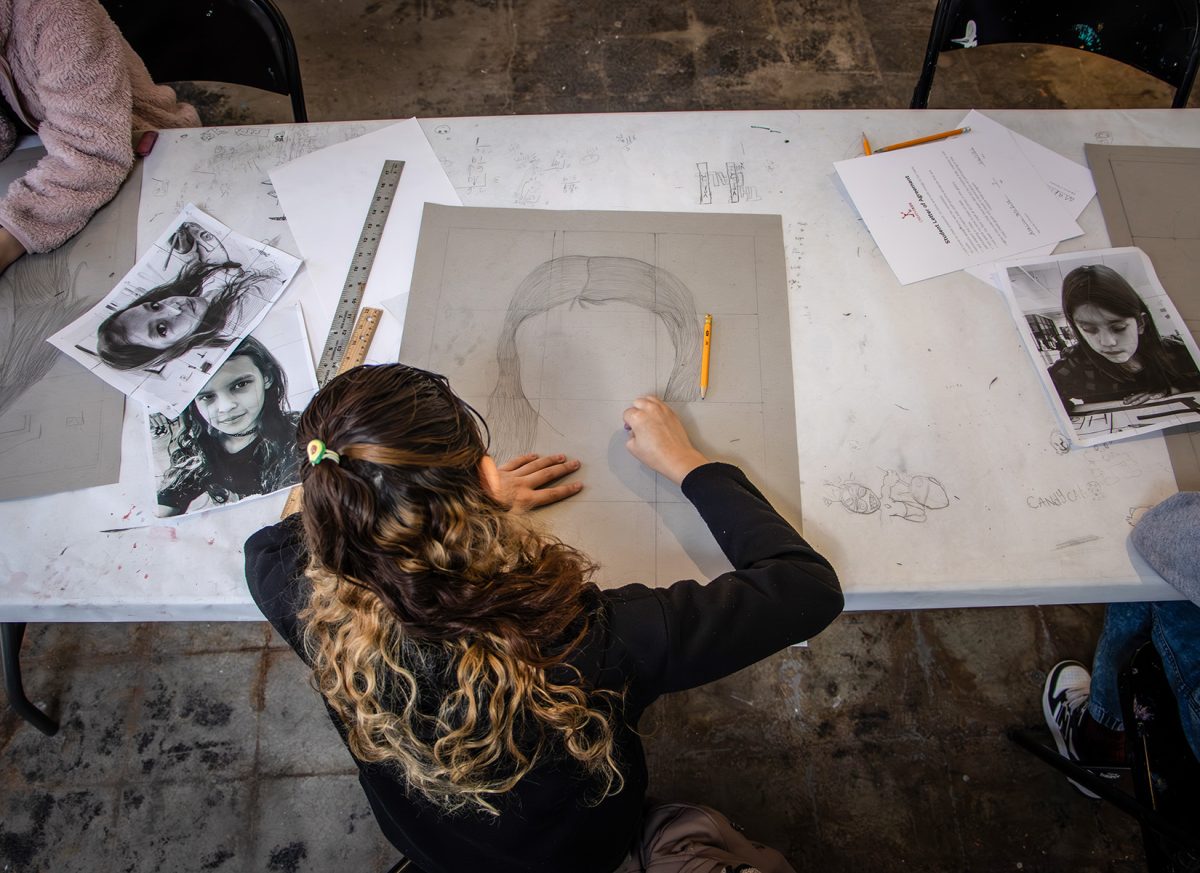Countless stories of migrant journeys often go untold and forgotten. On Friday, March 9, the Centennial Museum and Chihuahua Gardens unveiled their new exhibit, “Punto de Partida: Immigrants, Asylum Seekers, and Hospitality in the Borderlands,” which was curated by two El Paso organizations, Ciudad Nueva, and Abara Borderland Connections.
Ciudad Nueva is a local non-profit organization that aims to work with and engage with youth and adult participants to positively change the Rio Grande downtown neighborhood alongside their sister organization, Abara Borderland Connections, which is a non-profit organization that connects the American and Mexican border through their educational and social efforts.
Ciudad Nueva and Abara received the opportunity to create the exhibit when The Institute of Diversity and Civic Life offered the two organizations funds to create something that would tell the stories of migrants in the borderland. The Director of Partnerships and Development at Ciudad Nueva, Abby Carl Klasson, said Ciudad Nueva and Abara had already aspired to work on a project that shared the migration stories of community members.
“That’s where the inspiration came from, really just wanting to center, to amplify, and uplift these stories of our community members, our neighbors, and our friends,” Klasson said.
The “Punto de Partida” exhibit allowed people to share their migrant experiences at the United States-Mexico border. The exhibit is composed of different sections. The tapestry called “Familia Migrante,” was sewed by members of a migrant shelter in Ciudad Juárez. In addition, there is artwork from participants of the Ciudad Nueva youth programs. The stories are told by people engaged in Abara’s and Ciudad Nueva’s programs, as well as people in migrant shelters in Juárez.
Immigration has become a controversial topic to some in the El Paso and Juárez regions. However, Klasson said she thinks the communities are generous in helping migrants, so the exhibit also intends to highlight the kindness at the border.
“The core is (the borderland) we’re a community of hospitality, and especially these days, that’s an important thing to affirm and stand for,” Klasson said.
Faith Gamez, a contributor to the exhibit, shared her story of her transition as a migrant child moving to the United States. Gamez said it is significant to tell stories like hers because they teach the public to view migrants through a non-judgmental lens and the reality of their journeys.
“I wanted my story to be out there. I wanted them to know what I went through as an immigrant child and what my family went through,” Gamez said.
Klasson said she wants those who visit the exhibit to be moved by the stories and acknowledge the community’s efforts in helping these people.
“I really hope people come and celebrate the borderland community and celebrate all of the wonderful community members and their commitment to being good neighbors and good friends,” Klasson said.
Centennial Museum and Chihuahua Desert Gardens Director, Daniel Carey-Whalen, said the exhibit’s direct connection to El Paso makes it a asset to the museum. Carey-Whalen said people should take in the stories of people while also admiring how welcoming El Paso is.
“The humanness of migrants is just a part of who we are, especially here at the border; we all just have a migration story,” Carey-Whalen said.
The “Punto de Partida” exhibit shared just a fraction of the immigrant and migrant stories at the United States-Mexico border. The exhibit provides a way to inform and educate those who visit. Gamez said she wants her work to inspire people who relate to her story.
“I feel empowered because part of my story is out there, and I know it might impact other people’s lives and the way they view immigrant families,” Gamez said.
There will be a series of programs alongside the exhibit that will be available to the public throughout the display. The “Punto de Partida” exhibit will be available at the Centennial Museum and Chihuahua Gardens until Dec. 14.
Melissa Herrera is a contributor and may be reached at [email protected].

